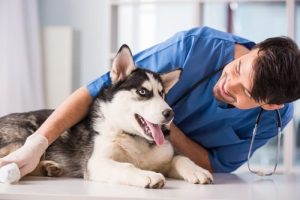Endoscopy for Dogs
Posted October 30, 2017 in Veterinary Tools
 Endoscopes aren’t just for medical doctors doing procedures on human patients. These tools can also be used in veterinary medicine to care for pets. Endoscopy can be used for the diagnosis and treatment of illnesses and other health concerns in dogs. With this resource, dog lovers can make sure their beloved pets get the necessary treatment to keep them healthy throughout their lives.
Endoscopes aren’t just for medical doctors doing procedures on human patients. These tools can also be used in veterinary medicine to care for pets. Endoscopy can be used for the diagnosis and treatment of illnesses and other health concerns in dogs. With this resource, dog lovers can make sure their beloved pets get the necessary treatment to keep them healthy throughout their lives.
Types of Endoscopy Used for Dogs
Endoscopy can help veterinarians diagnose and treat dogs for a range of medical conditions. Veterinary concentrations that rely on endoscopic tools include focuses such as laparoscopy, arthroscopy, GI endoscopy, respiratory endoscopy, and urology. Endoscopic tools make it easier to treat our four-legged friends for health conditions without having to perform costly and complicated surgical procedures.
How Endoscopy Has Changed Medical Treatment for Dogs
Veterinary endoscopy has changed medical treatment for dogs in significant ways. The first is in diagnosing health conditions. When diagnosing a medical condition in humans, doctors will ask questions such as, “Where does it hurt?”, “What does it feel like?” or, “How long has this been going on?” These questions lead to answers that determine whether an endoscopic procedure is necessary. Unfortunately, animals cannot answer questions, which puts all the responsibility on the veterinarian to determine a course of action based on his or her evaluation. Endoscopic equipment makes evaluation easier by letting a surgeon examine things more closely without conducting a major operation. For example, if a dog is vomiting or won’t eat, a veterinarian may want to test the dog for a condition like GI disease. Using an endoscope could show that instead of there being something wrong with the dog’s health, the dog simply swallowed an object without the owner’s knowledge. Endoscopically removing the object may make the dog’s digestive troubles go away.
Additionally, endoscopy gives dog owners a better chance at taking care of their pets. For example, when a dog eats something he shouldn’t have, a veterinarian can endoscopically retrieve the object and save the animal from the painful and potentially life-threatening prospect of passing it. Endoscopy can be used to diagnose and treat cancer in dogs. It also reduces the risks of certain types of medical treatment. Although every medical procedure has some risk, endoscopy has fewer risks than major surgery. As an example, endoscopy doesn’t require an abdominal incision, which means the dog will have a shorter recovery and usually no overnight stay with the vet. Dogs that need steroids to treat a health condition can begin taking them shortly after endoscopy instead of delaying them until surgical incisions have healed. Minimally invasive procedures give veterinarians more options for treatment that can save or prolong the life of a beloved pet. Veterinary endoscopic equipment can be the key to providing the best treatment for four-legged pets and their concerned owners.
